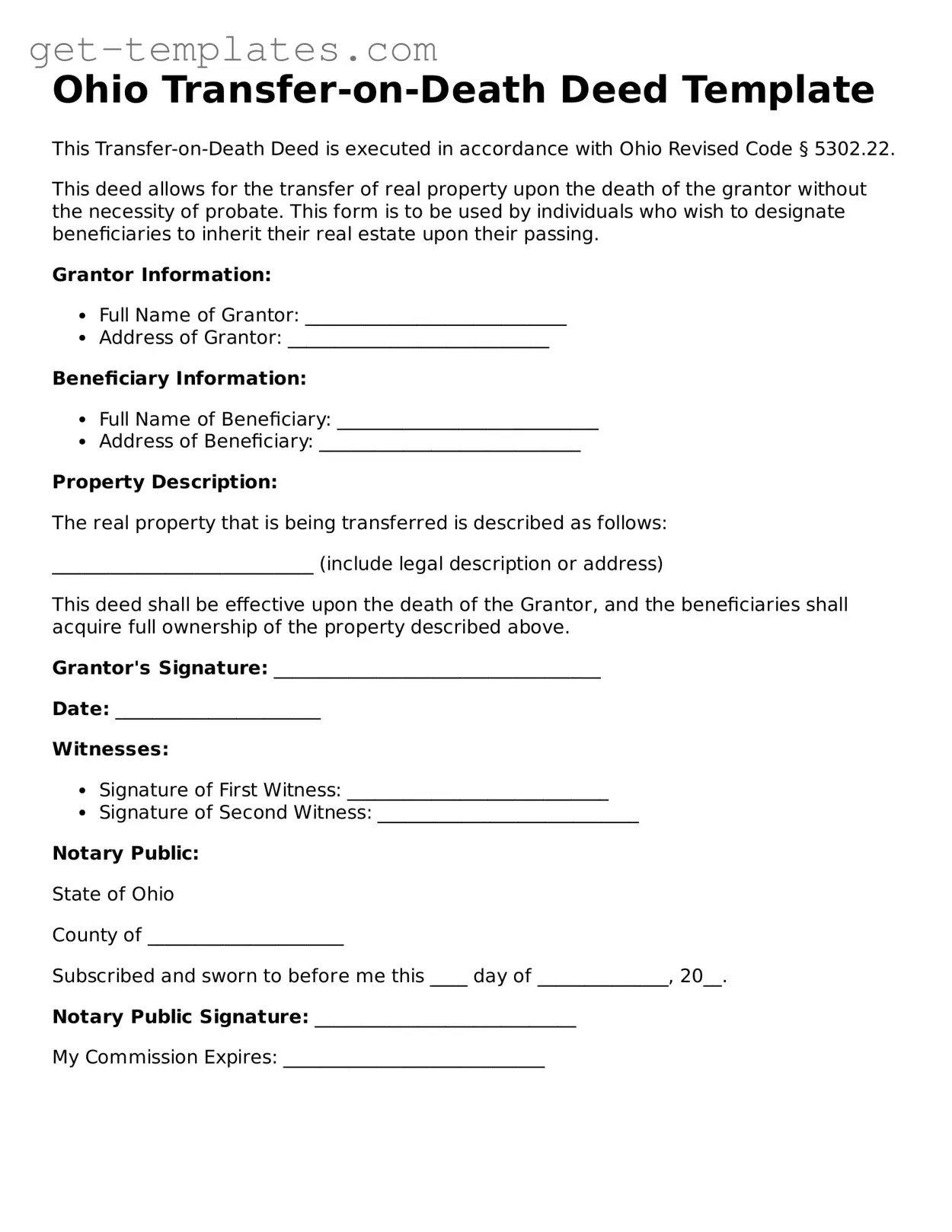Ohio Transfer-on-Death Deed Template
This Transfer-on-Death Deed is executed in accordance with Ohio Revised Code § 5302.22.
This deed allows for the transfer of real property upon the death of the grantor without the necessity of probate. This form is to be used by individuals who wish to designate beneficiaries to inherit their real estate upon their passing.
Grantor Information:
- Full Name of Grantor: ____________________________
- Address of Grantor: ____________________________
Beneficiary Information:
- Full Name of Beneficiary: ____________________________
- Address of Beneficiary: ____________________________
Property Description:
The real property that is being transferred is described as follows:
____________________________ (include legal description or address)
This deed shall be effective upon the death of the Grantor, and the beneficiaries shall acquire full ownership of the property described above.
Grantor's Signature: ___________________________________
Date: ______________________
Witnesses:
- Signature of First Witness: ____________________________
- Signature of Second Witness: ____________________________
Notary Public:
State of Ohio
County of _____________________
Subscribed and sworn to before me this ____ day of ______________, 20__.
Notary Public Signature: ____________________________
My Commission Expires: ____________________________
